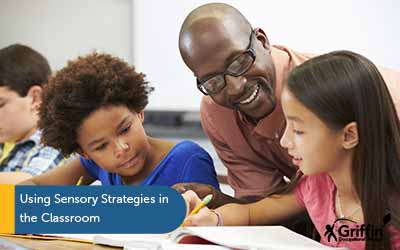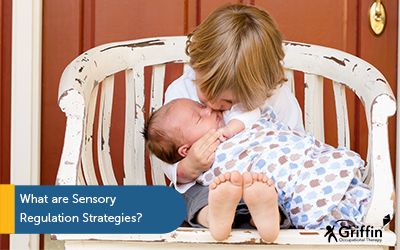There’s more to occupation than meets the eye!
Children’s, or paediatric, occupational therapists (OTs) support children to engage and participate in their chosen occupations. Occupation can be a misleading term in this instance. It is best to think of occupation in terms of activity. Children’s activities can include playing, school work, dressing, feeding, reading and sports. This post will explore a bit more about their role.

There’s more to occupation than meets the eye!
Children’s, or paediatric, occupational therapists (OTs) support children to engage and participate in their chosen occupations. Occupation can be a misleading term in this instance. It is best to think of occupation in terms of activity. Children’s activities can include playing, school work, dressing, feeding, reading and sports. This post will explore a bit more about their role.
Children’s (Paediatric) Occupational Therapy
A children’s occupational therapist is an allied health professional (AHP). The profession sits alongside speech and language therapy, physiotherapy and psychology. The unique areas a children’s occupational therapist can support are sensory processing, self care, dyspraxia, developmental coordination disorder and fine motor skill development. In addition, and alongside the other AHPs, OTs help with play skills, access to learning and gross motor skills.
Activities that paediatric occupational therapists typically help with include handwriting, dressing, feeding, poor coordination with sports, toilet training, sensory issues including sensitivity and poor fine motor skills. They may do this by working directly with a child or providing advice to the child’s family or school.
The UK government frequently includes occupational therapy within statutory provision on Education Health and Care Plans (EHCP). This means that they require many schools to provide OT input for their students. Target goals typically include support for sensory issues, improvement of handwriting, ability to do buttons or improvement of other fine motor skills.
“It is best to think of occupation in terms of activity. Children’s activities can include playing, school work, dressing, feeding, reading and sports.”
Why might a child need to see a children’s occupational therapist?
Children’s occupational therapists are experts in sensory processing, self care and fine motor skills. A child with autism might see an OT to help support sensory sensitivities such as touch sensitivity or sound sensitivity. A child with poor handwriting might see a children’s occupational therapist to help with their pencil grasp. Some children may see an OT to help with toileting or feeding. Other children might have delays with their fine motor skills which affect their ability to cut with scissors or do up buttons. Occupational therapists are the only allied health professionals that learn about both physical and mental health. Their core focus is function and independent participation. This places them well to support children with a number of different challenges.
“Occupational therapists are the only allied health professionals that learn about both physical and mental health. Their core focus is function and independent participation. ”
How can my child access a children’s occupational therapist?
Currently children have the option to see state therapists (i.e. NHS) or to go privately. Some schools also provide groups or activities targeting OT areas. Teaching staff usually lead these and they do not necessarily involve OT support.
Accessing an NHS occupational therapist – UK
In my experience, the wait time in the UK to see an OT in the NHS can vary from 3-12 months. The referral process also varies in each area. Your school SENCO or health visitor can typically advise what the referral process is. Sometimes your GP will be able to find the information. You can also search ‘NHS children’s occupational therapy xxxxx’ with xxxx being your location (e.g. Oxfordshire).
There can be a restriction of number of session a child may receive, often ranging from 3-6 sessions. In most cases a written programme of ideas is given for parents and school teaching staff to carry out. These programmes might go through review termly if a child has an EHCP, but in many cases reviews do not take place unless there is a request (and to have a review the child often needs to go back onto the initial waiting list and repeat the process). Some services offer training to schools on topics like handwriting, sensory issues and fine motor skills. Other services run groups to help children with their skills.
“Your school SENCO or health visitor can typically advise what the referral process is.”
Accessing an occupational therapist privately
Some children are fortunate to have parents who can pay for private occupational therapy. Assessment costs seem to vary from £400-1700 depending on the area of the UK and the purpose of the assessment. Individual treatment sessions range from £70-200 per session. If you are looking for a private OT you can search for therapists using the Independent Practice Register. Therapists pay to be on this register and have to be a member of the Royal College of OT Independent Practice Specialist Interest Group. You may find a therapist in your area that is not on this register and this is OK.
The main thing you need to check is that the therapist is registered with the Health and Care Professional Council (HCPC). You can do this here on the register. It is illegal to practice as an occupational therapist in the UK without HCPC registration. Registrations are renewed every two years, so it is normal to see a registration period. The next renewal year for occupational therapists is 2021. There are equivalent registration requirements in the United States and Australia.
“The main thing you need to check is that the therapist is registered with the Health and Care Professional Council (HCPC).”
Online occupational therapy
At GriffinOT we understand that educators and parents want to help their children as much possible. As children’s occupational therapists focus on function and participation, they are uniquely placed to help educators and parents support their children in a variety of ways. This includes assisting the development of fine motor skills. and helping with sensory processing difficulties. However, we also know that access to occupational therapy services, unfortunately, can be limited. This means that teaching staff and parents are trying to support children with reduced occupational therapy support.
We want to ensure that the adults supporting children with occupational therapy needs have immediate access to high quality, affordability OT advice. This is why we offer online occupational therapy informed programmes and training as an option for schools and families.
“We want to ensure that the adults supporting children with occupational therapy needs have immediate access to high quality, affordability OT advice.”

GriffinOT – Online training and support
Our supports and training are designed to provide an introduction for educators and parents. We want to help you to understand why certain behaviours might be occurring. Then, we show you what you can do to help your children. Our resources currently cover sensory processing and fine motor skills. They offer a starting point for all educators and families.
Why we choose to deliver children’s occupational therapy online
Whilst we wholeheartedly believe that direct children’s occupational therapy (OT) intervention is best practice, we are aware that in many cases there is limited or no access to occupational therapists. In 2019, the Royal College of Occupational Therapist released a report titled OT: Unlocking the potential of children and young people. In this report they recommended a three tiered framework for when supporting children who have occupational therapy needs. This framework supports universal, targeted and specialist interventions.
Universal OT interventions
Universal interventions include the provision of training, mentoring, information and literature to adults supporting children. The aim of universal support is to ensure that parents, carers and those working with children have the knowledge they need to help children realise their potential.
The GriffinOT resources are a good example of universal intervention. Our website provides information. Our courses provide training on sensory processing issues and fine motor skill development. We also review current literature and make this available through our newsletter.
“Universal support, such as Griffin OT’s online resources, ensure that parents, carers and those working with children have the knowledge they need to help children realise their potential.”
Targeted OT interventions
Targeted interventions optimise the development, health and well being of children and young people whose outcomes are at risk. They could include groups or workshops and adaptation of activities or materials or environments. The aim with targeted intervention is to prevent difficulties from escalating. Delivering targeted interventions in partnership with those most involved with children is ideal. This helps to build community capacity and to address needs early on. It also embeds support into the child’s day and week.
Our sensory courses explore how to adapt environments and activities to support children with additional sensory needs. Our fine motor skill programmes provide clear information on how parents, carers and educators can help children with fine motor skill delays. Whilst the training is online, it provides similar information that would be given in groups and onsite consultation. It also provides immediate support without the need for referral or a waiting list. In addition, accessing them does not require a threshold or diagnosis. The resources can be used alongside direct OT provision or as a standalone resource.
“Accessing our courses does not require a threshold or diagnosis.”
Specialist OT interventions
Some children with complex needs or circumstances will benefit form a period of direct, specialist intervention to address a particular need. An occupational therapist needs to deliver this type of intervention, rather than parents and teachers accessing it online. It is beyond the scope of our resources. However, throughout our training we identify when referral for specialist support is necessary. This allows you to know when to seek additional supports.
“Throughout our training we identify when referral for specialist support is necessary.”
Do you have any evidence about the impact of the online OT supports?
In Scotland, paediatric occupational therapists provide a NHS online support service (NHSGGC KIDS). This resource is helping to reduce demands on face to face services by providing information for parents and schools. The team report that whilst the model has led to more initial enquiries, it has reduced the need for specialist support in the longer term. (Presentation at RCOT Children and Families Conference, London, 2019).
We have completed three different review of our programmes. Kim has presented the results at conferences and written about them for different magazines. You can review our impact reports here.
“In Scotland, a paediatric occupational therapist NHS online support service has reduced the need for specialist support in the longer term.”



